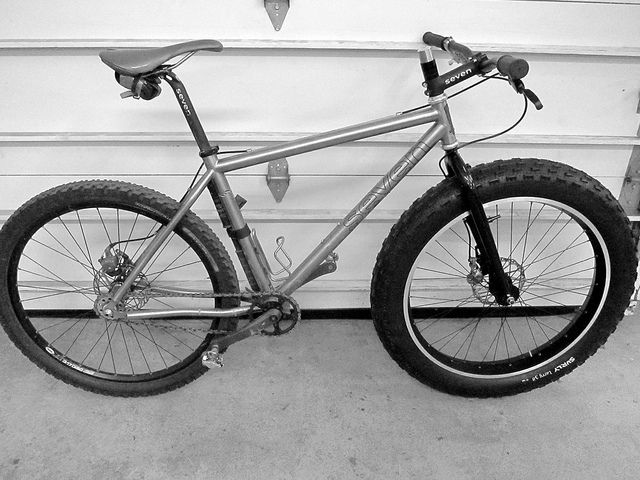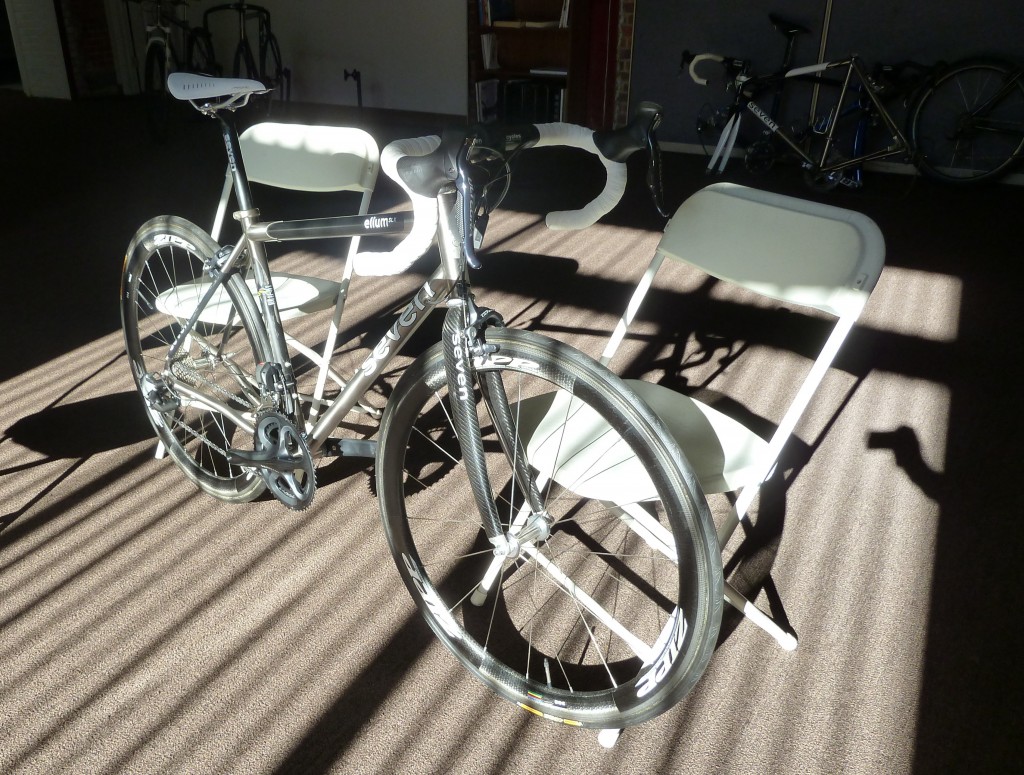Category: Articles
Morning Roll
The Seven Cycles Showroom
Our showroom, such as it is, is a beautiful space, with vaulted ceilings and a generous supply of natural light. In the morning, the sun slants in through the blinds and bathes the few bikes that live there in a warm glow.
Invariably, we display our project bikes there. The Berlin Bike is often in residence. The Bicycling Magazine bike has been a frequent occupant. But, also invariably, those bikes want to go out to bike shops for display or for special events.
Today, just today, the bikes in the showroom consist of: Rex, the very first Seven, the primogenitor, the bike that spawned all others; Rob’s belt drive Cafe Racer with custom Tiberius handlebar and S&S frame couplers; Karl’s Elium SL, all carbon lightness in a pure-speed build.
We should make clear that employee bikes end up in the showroom quite a bit. Back at home, garages and storage rooms struggle to accommodate all of our cycling predilections. It ends up being a symbiotic arrangement. The showroom gets beautiful bikes to display. And our loyal Seven staff get more space for even more bikes.
There are a few frames hung in one corner, examples of our best custom paint work, and a pair of Elium SLXs with internally routed Di2 builds. They’re on their way out, demo bikes for shops who want the very latest in their own showrooms.
We joke a lot about the showroom. What do you call a bike company with no bikes? More than once, a passing tour has offered to buy an employee’s bike right off the display rack. It’s good to make a product you can’t keep in stock. It’s the problem you want to have.
boston.com: Make a Holiday Wish
By Luke O’Neil
We ask local celebrities and people of influence what gift(s) they want
SEAN GRIFFING, co-owner of Trade
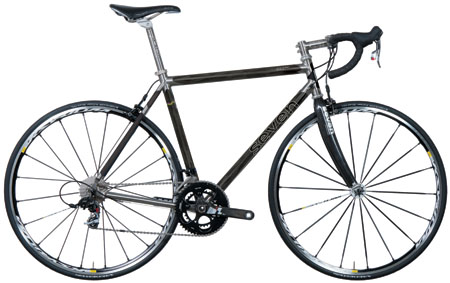
A Seven Cycles 622 SLX road bike (www.sevencycles.com). I’m an avid cyclist. This bike is new for the 2012 model year for Seven and it is their lightest production frame to date. Each Seven bicycle is custom made in Watertown for the rider’s specific body type and riding style. It’s a beautiful marriage of carbon and titanium. Or an Evoluzione Range espresso machine from Rocket Espresso is the Ferrari of espresso machines and would be a perfect addition to my home kitchen.
Mudhoney PRO: The Quest to Build the Perfect Cross Bike
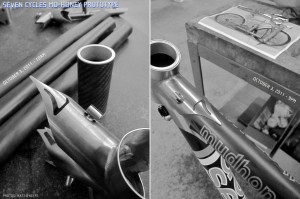
If you’ve ever been over your handlebars into a sand pit, you know that the forces that come to bear on a cyclocross bike can be both unexpected and catastrophic. You also know that trying to get all that sand out of your mouth is much more complicated than simply swishing some post-race beer around and then spitting, like you were at the outdoor dentist.
Because of the big hits a typical CX race bike takes, we think that a pure carbon frame is the wrong tool for the job. There simply isn’t enough forgiveness in that material to justify the weight savings you would get over a metal bike. That doesn’t mean carbon fiber has no place on the course though.
Carbon fiber is good at two things. First, it eats high-frequency vibration better than metal, so having some carbon in your CX frame is good when you’re flying over grass or even grinding a big gear on a paved section. You’ll be smoother and get better power transfer. The other thing carbon fiber is good at is being light. Light can be good when you’re racing, right?
But it’s not everything.
Metal is good at some things, too. Titanium, for example, will give a frame a suppleness and a maneuverability that an all-carbon fiber frame doesn’t have. In the technical section of any course, in the switchbacks or in the mud, titanium will give you the ability to use your whole body to steer with. A titanium drive train will be easier to power in chattery sections than a carbon one. Sometimes a little flex is a good thing.
At Seven, we have the ability to build an all-carbon cyclocross racer and make it every bit as customizable as any of the other bikes we build. When we set out to expand our cross line though, an all-carbon bike never even crossed our minds.Instead we built the machine that would come to be known as the Mudhoney PRO.
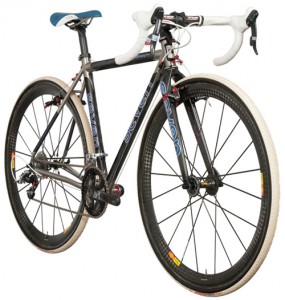
The Mudhoney PRO aspires to wring every last advantage out of the two materials in its design. The carbon fiber top, seat, head, and down tubes form a light triangle. Matching seat stays settle your saddle. By putting titanium lugs and chainstays into the mix, we getsuppleness where we want it, plus added durability. A titanium drive train will improve tracking and traction; it will hold the ground better than a carbon one, especially in the more technical sections.
Marrying materials in this way isn’t easy; it takes advanced bonding techniques to gain all these advantages and still be able to offer a lifetime warranty. Luckily, we’ve been mixing titanium and carbonsince 1997.
We can’t guarantee you won’t go over the bars of the Mudhoney PRO. When it comes right down to it, sand is unpredictable, and we could all use more practice carrying momentum from the fast parts of the course into the technical sections. What we will say is that you won’t find a cross racer that trackstruer and holds the ground better. And there’s always that post race beer to look forward to.

